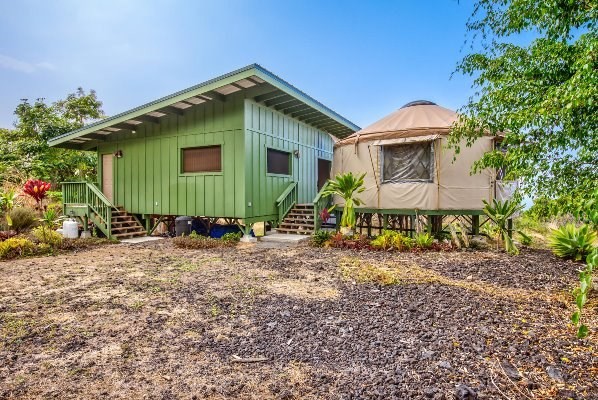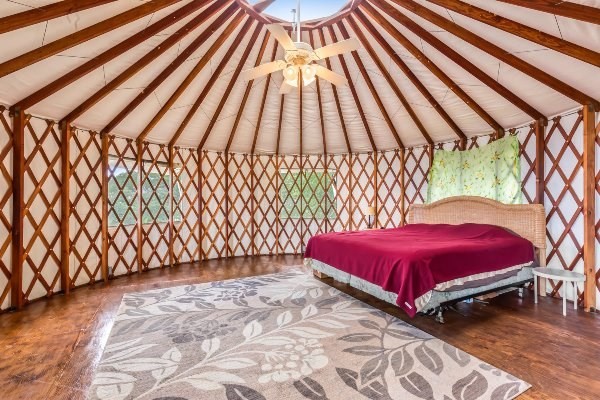Finding the perfect home that is both affordable and efficient can be a challenge, especially here on the island. For this very reason alone, many consumers are looking into building their own homes. But I’m not talking about 2,000 square foot homes filled with all of today’s modern amenities and technologies. I’m talking about homes that lead to simpler lifestyles. Homes that are less cluttered and reduce the ecological impacts of their residents. I’m talking about tiny homes.
What is a Tiny Home?
Whereas a small home is considered anything between 400 and 1,000 square feet, a tiny home is one less than 400 square feet. Currently, the tiniest home is about 60 square feet. This may sound like close quarters, but the meticulous planning involved in building tiny homes ensures optimal use of space. Also, for those smaller than 8×20, or 120 square feet, not only are they easier to move, they don’t require building permits for construction.
You may be wondering now how exactly one may move their tiny home. Well, tiny homes can be constructed on wheels to be mobile. Jay Shaffer, founder of Tumbleweed Tiny House Company, designed and lived in the first tiny house on wheels (only 96 square feet). Although tiny houses on wheels are often compared to RVs, they are built with traditional building materials to last as long as traditional homes, and they are aesthetically similar to larger homes.
In the past, tiny homes were typically used as add-ons, guesthouses, on-property housing for aging relatives or children returning home, home offices, solutions in disaster areas, and homes for the homeless. However, with costs ranging from $20,000 to $70,000 in 2012, they are becoming ever increasingly popular as main homes. Not to mention, tiny houses are less expensive in other ways as well. Consider cooling costs, maintenance, and repairs of a large home, and then imagine what they would be if you lived in something as small as 120 square feet.

How Did Tiny Homes Become So Popular?
Tiny homes have gained popularity through the “tiny, or small, house movement.” This movement is a description for the architectural and social movement that advocates living simply in smaller than small houses. The purpose of the tiny house movement is to return to houses less than 1,000 square feet.
In 2013, the average size of new single family homes exceeded 2,600 square feet even though family size had decreased by comparison to family size in 1978, when new single family homes averaged 1,700 square feet. The tiny house movement is steadily gaining interest through increased media coverage through serial television shows like Tiny House Nation.
However, although tiny houses may be more affordable and ecologically friendly, they only represent a very small part of real estate transactions. Only 1% of home buyers acquire houses of 1,000 square feet or less.
Building a Tiny Home
If you’re interested in building a tiny home, there are options available here on the island. Tiny Pacific Houses is steadily expanding their areas of service and provides models on their website, giving consumers an idea of what can be built, along with costs.
If a tiny home isn’t exactly what you’re looking for, you may also consider a yurt, or round structure used thousands of years ago to accommodate nomadic people in Mongolia. Yurts, like tiny houses, are very practical alternatives to expensive housing and can be retrofitted to work beautifully here on the island.

To learn more about sustainable living on the islands, check out my past blogs on Hawai’i 2050 and living off-grid, or contact me today!

Beth Thoma Robinson
May 22, 2016
The older I get, the better a tiny home sounds! Great blog post, Julie.
Beth Thoma Robinson
May 22, 2016
The older I get, the better a tiny home sounds! Great blog post, Julie.
Sean King
September 16, 2019
Hey Julie,
I know your tiny home post is pretty old so maybe things have changed. My family and I are on Maui currently living in Haiku and love it. Unfotunately, rent is insane and unsustainable for us as it keeps going up. Where can I learn about land buying options where we could place a temporary yurt while building a tiny home? Who can I speak with about making this happen. We currently have money saved up from out recent home sale in california. about 150k
Any resources and help would be greatly appreciated! Thanks!
Sean King
Sean King
September 16, 2019
Hey Julie, where can ai find more info and laws pertaining alternative living solutions here on Maui.
Thanks,
Sean King